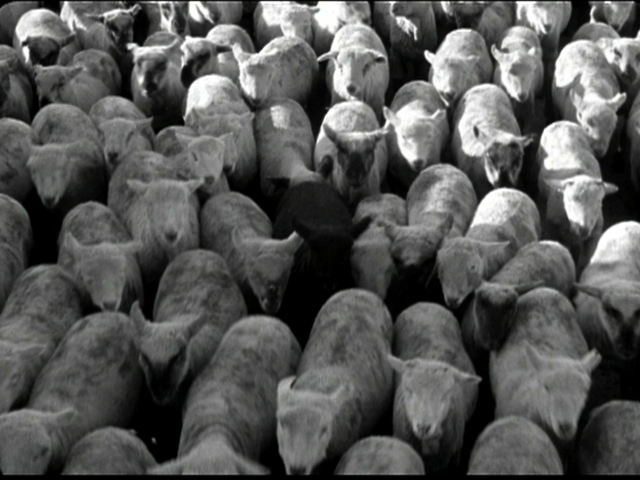Main Content
Lesson 2: The Development of Cinematic Language
Framing Modern Times
Chaplin begins Modern Times with a framing montage, introducing all of the important themes that we see in the film. Pay attention to the details here.
Video 2.14: Modern Times framing montage.
This is the ironic commentary on the constitutional ideal of pursuit of happiness, showing men as herds of sheep moving toward a factory that dominates their experience of time in which the machines dominate over them. This idea is established by the dissolve of the sheep into the men streaming out of the subway and by the spatial relationships of people to machines. In a movie that is very reflective about sound in modernity, the music is driving and rhythmic, like the rhythms of the factory that it's trying to represent. Chaplin wrote the music himself.
The only other soundtrack in this, the horn, is post production sound, because this was all recorded in silent mode. The sounds are imperatives saying begin to work, stop working. This is the way that mechanized sound works for Chaplin.

Yet even in this opening montage, with all of its concerns about machinery dominating over men, we see a quick nod to the spirit of resistance, the idea of challenging the routine and standing out from the herd. In the center of this frame, we see a black sheep.
A black sheep is somebody who is standing out from the herd. This is an allusion to the character that Chaplin is going to introduce, the Tramp character, the character that cannot fit into the modern herd of man.
As in the other Chaplin films, Modern Times is a film that uses stock characters, in allegorical types. This helps us read Modern Times as an allegory because these characters are allegorical types. And in many cases in Chaplin's films, we have these abstract names to point our attention to that. In this film we have these characters:
- The Tramp
- The Gamine (a love interest)
- The Big Boss
- Big Bill
- The Sheriff
Chaplin's comedy is based on exaggerating characteristics so as to draw attention to them. These are the allegorical types that one might bump up against in modernity, Chaplin seems to be saying.
